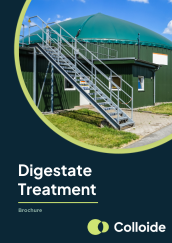What is Anaerobic Digestion?
Less landfill, stable energy prices, carbon neutral emissions, and even a financial saving.
Anaerobic Digestion Overview
Anaerobic digestion (AD) isn’t a new technology. It’s actually been around since the 1800s. But, as concerns about the environment grow, so has the demand for ways to generate renewable energy and, as a result, investments in AD over the past few years have increased.
AD converts organic material such as food waste, slurries and crop residues into bio-gas; a methane-rich gas that can be used as a renewable fuel, and digestate; a source of nutrients that can be used as a powerful fertiliser or soil conditioner. This process happens in the absence of oxygen in a sealed, oxygen-free tank called an anaerobic digester.
Anaerobic Digestion is an environmentally friendly, cost-effective solution to dealing with much of what we think of as “waste”. Instead of burning it, or sending it to landfill, AD plants could potentially turn that “waste”, along with purpose grown crops, into 10% of the UK’s domestic gas, which means less landfill, stable energy prices, carbon neutral emissions, and even a financial saving for homes, businesses, farms and councils across the country.[1]


Anaerobic Digestion
How Does the Anaerobic Digestion Process Work?
The process takes place in an oxygen-free digester, where micro-organisms (bacteria and archaea) breakdown the organic matter. There are four main stages to this process: hydrolysis, acidogenesis, acetogenesis and methanogenesis. Each stage breaks the matter into smaller and smaller parts, until the only remaining substances are methane, carbon dioxide and water, three very simple molecules. At the end of the process we have a mixture of methane and carbon dioxide gases (biogas), water and some organic material (digestate).[2]
Biogas can be used to produce heat and electricity. It can be used in combined heat and power (CHP) gas engines or it can be burned to produce heat only. Alternatively, biomethane can be produced by removing the carbon dioxide from the biogas. The biomethane has many valuable uses. It can be injected into the gas grid as a renewable replacement for natural gas or it can be used as vehicle fuel.
Digestate is a nutrient-rich substance which contains high amounts of nitrogen and phosphate that has value as an agricultural fertiliser or soil conditioner.
Benefits of Anaerobic Digestion
There are two main benefits of Anaerobic Digestion. It can have a positive impact on the environment, and it can provide direct financial returns.
- It turns waste into renewable resources
- Removes harmful pathogens from biological waste.
- It produces cleaner fuel.
- Fertiliser is produced.
- It reduces our carbon footprint.
- AD benefits the local community, the environment, industry, farmers and energy entrepreneurs and government.
- Operational support provided by the Government.
Is AD right for me?
The key questions for a potential developer are:
- Do you have access to sufficient feedstock/waste?
- Is there a market for the digestate?
- What do you have in terms of good access, storing and handling facilities?
- Are you willing to take on a high capital project with a capital rich initial period (i.e. can delayed returns be absorbed in your cash flow model).
Why Choose Colloide?
Colloide can act as design and build contractors and supported by our supply chain, we can offer a ‘turn key package’ and take care of all aspects of the system including upgrading biogas to biomethane. Our ‘full circle’ service removes the pressure and time constraints for our clients.
Our in-house team is knowledgeable in the industry and can provide advice on the grants and incentives available within both the UK and ROI.
Get in touch
Speak to us today for help building your own anaerobic digestor.
Our in-house team is knowledgeable in the industry and can provide advice on the grants and incentives available within both the UK and ROI.


